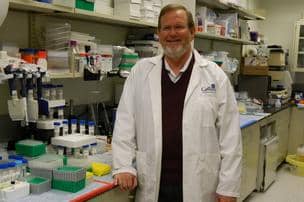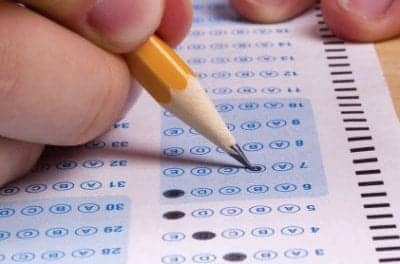The Pluses of Home Sleep Testing

Over the last several years, the subject of home-based sleep testing has been thoroughly researched by a number of entities. The National Institutes of Health (NIH) recognized numerous shortcomings in the existing diagnostic sleep pathway. It called for significant changes and improvements to provide increased access to diagnostic sleep testing. In 1996, the NIH Report of the National Center on Sleep Disorders Research made the following observation and subsequent recommendations:
“Currently, diagnosis of many sleep disorders and assessment of the magnitude of sleepiness is usually done using in-laboratory techniques, which can be expensive and inconvenient.”
It recommended the following course of action:
- To develop more cost-effective approaches (including in-home techniques) for diagnosis of obstructive sleep apnea.
- To develop ambulatory approaches (including those that can be delivered in nonlaboratory settings) to assess the extent/level of sleepiness caused by sleep disorders.
- To develop approaches for in-home assessment of sleep disturbances and therapeutic effectiveness. Systems that communicate information about the use of treatments such as continuous positive airway pressure (CPAP) and intraoral devices, sleep patterns of those with insomnia, and degree of movements during sleep would have important clinical value.
Several studies over the last several years have confirmed the NIH conclusions. A 1996 study by Noel Johnson at the Seattle Sleep Disorders Center concluded that “a properly conducted home-based sleep apnea care paradigm is equivalent in outcomes to traditional laboratory-based sleep apnea care.” The conclusions from a 1998 study by Fry et al, at the Hahnemann School of Medicine, stated that “…unattended polysomnography can be performed in the home with reliable and high quality recordings.”
While recognizing that this is a complex issue, it is important to remember that standards in both home-based and in-laboratory testing may vary throughout the country. The samplings that Kilkenny discussed were limited to the New York City area. He must be unaware of first-rate sleep diagnostic organizations throughout the rest of the country that do a superb job of not screening, but actually diagnosing patients with sleep-related breathing disorders (SRBD). These providers have developed a “continuum of care” model, which works in conjunction with the referring physician to diagnose, provide treatment equipment, educate, and provide ongoing follow-up for patients so that health outcomes can be measured. By focusing on outcomes and patient care, this type of model effectively diagnoses and treats patients in a timely manner to dramatically improve their quality of life.
Kilkenny mentioned the reasons why physicians or insurance payors may favor home testing, but neglected to consider the individual who is to undergo the study, which is the patient. If you were to poll otherwise healthy patients, you would find that the majority would prefer that the testing be done in the comfort of their own home. Most patients who have undergone both in-laboratory studies and home testing found that they slept better and longer at home. Furthermore, we find that patients at home are able to complete the testing process faster when compared to laboratories because home-based sleep care companies are not limited by laboratory space. While it is true that home-based companies are restricted by the number of portable testing devices and licensed and trained professionals, it is easier to purchase more equipment and hire personnel rather than build or remodel a sleep laboratory. Establishing more sleep laboratories is cost-prohibitive for most hospitals.
Approximately 5% of those who have sleep-disordered breathing have been formally tested, while the other 95% remain undiagnosed. Even with the steady growth of both accredited and nonaccredited facilities, it is impossible to meet the demand for diagnostic sleep testing relying solely on the laboratories. Should potential patients be told that there is only one way to verify a sleep disorder, when, in fact, other more innovative and less costly methods of testing are validated and are continuously being refined? An informed public is one of the first steps in creating a need for more sleep care providers to diagnose the high percentage of people who are currently unaware that their fatigue is caused by a sleep disorder. The media has finally become interested in the field of sleep and frequently publish newsworthy articles and reports to educate the public. Why should the media not present all of the options to the public?
There are patients who absolutely need a fully attended sleep study. These patients may include those presenting with neurological-based disorders, comorbidity issues, complex medical histories, and parasomnias. In Kilkenny’s article, he neglected to comment on the fact that many sleep laboratories also offer home testing for patients. In some cases, a patient may need to be studied immediately, yet no laboratory beds are available. Another scenario may be that patients may not present with the classic symptoms for obstructive sleep apnea (OSA). For example, they may have extreme levels of fatigue, but show no physiological signs and no other indications of OSA. In this case, the home-based study is an accepted tool for ruling out SRBDs and effectively decreases false negatives. In the event that the test proves positive, patients can explore treatment options earlier than had they waited for an in-laboratory bed to become available.
The author also overlooked that most of the manufacturers of polysomnography equipment are continually developing newer devices using proven technologies that may either replace current offerings or be an adjunct to existing equipment. These manufacturers see the future in testing situated in both the home and the laboratory. They understand that many laboratories are already providing home testing and routinely market their products to sleep laboratories, as well as home-based sleep providers.
The figures Kilkenny presented do not fully disclose enough data for readers to draw their own conclusions, as he did not provide the actual costs for the full night diagnostic, split night, or titration studies. The patient population (not a random sampling, I presume) from the New York area revealed that of the 2,484 patients tested, approximately 93% were confirmed to have sleep-related breathing disorders and underwent CPAP titration. Had these same patients undergone testing performed by a reputable home-based sleep care specialist, the total testing cost would have been reduced by as much as 37%. As this editorial column does not adequately provide the appropriate forum for such specific price comparison, anyone interested in discussing specific cost analysis can contact me directly.
As for the statement that “the validity and economy of home testing are clearly subject to debate regrettably does not eliminate the ‘better than nothing’ argument, which is the ultimate and perhaps only justification for any kind of home testing.” After reading this column, I hope that people will realize that Kilkenny’s conclusion is flawed.
I am confident that other sleep professionals will ultimately recognize that home-based testing that utilizes valid, multi-channel equipment is where the future of sleep medicine lies and that patients, insurance payors, and medical professionals will see the greater benefits it affords.
Robert B. Koenigsberg is president and CEO of SleepQuest Inc, Redwood City, Calif. He may be contacted via email at [email protected].



